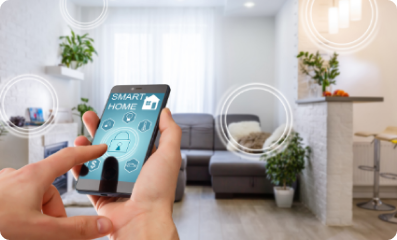Smart home technologies are becoming increasingly popular, as more and more people are looking for ways to make their homes more convenient, efficient, and secure. In this article, we will explore the various types of smart home technologies and how they can enhance our daily lives.
Smart Lighting
Smart lighting systems allow homeowners to control their lights remotely through a smartphone or voice-activated device. They can adjust the brightness, color, and timing of their lights to suit their preferences or schedule. Smart lighting can also be programmed to turn on and off automatically when homeowners are away from home, which can help to deter potential intruders.
Smart Thermostats
Smart thermostats allow homeowners to control the temperature of their home remotely, through a smartphone or voice-activated device. They can set their preferred temperature, create schedules, and monitor their energy usage. Smart thermostats can also learn a homeowner’s habits and adjust the temperature accordingly, which can help to save energy and reduce costs.
Smart Home Security
Smart home security systems allow homeowners to monitor their home remotely through a smartphone or other device. They can view live video feeds from cameras, receive alerts when motion is detected, and lock or unlock doors remotely. Smart security systems can also integrate with other smart home technologies, such as smart lighting, to create a more comprehensive security solution.
Voice-Activated Assistants
Voice-activated assistants, such as Amazon’s Alexa and Google Assistant, allow homeowners to control their smart home technologies through voice commands. They can adjust the temperature, turn on and off lights, and even order groceries or takeout.
In Conclusion
Smart home technologies offer a range of benefits to homeowners, from increased convenience and efficiency to enhanced security and energy savings. As these technologies become more advanced and affordable, they are likely to become an integral part of modern homes. However, it is important for homeowners to weigh the benefits and drawbacks of each technology carefully, and to ensure that they choose solutions that meet their specific needs and preferences


